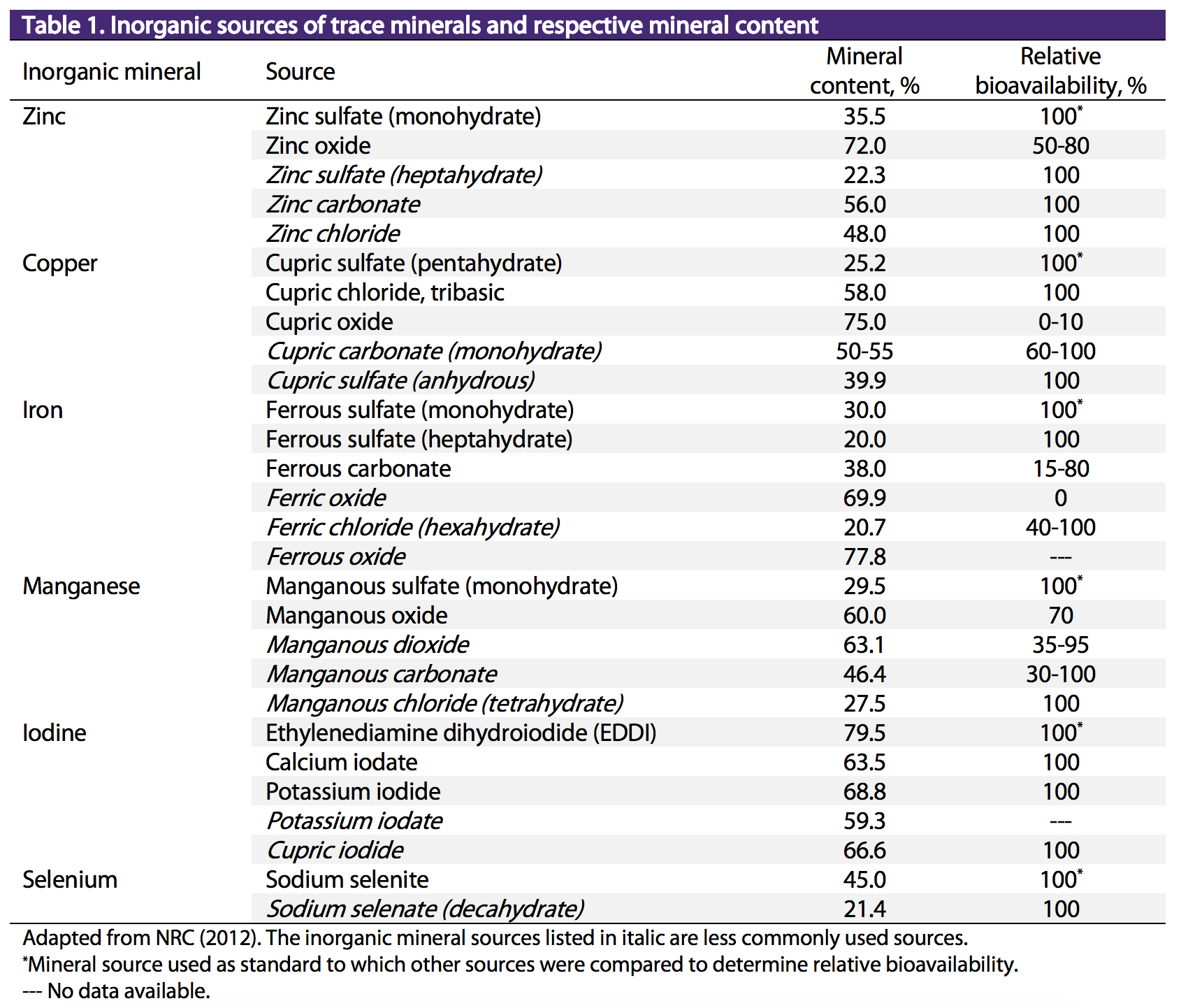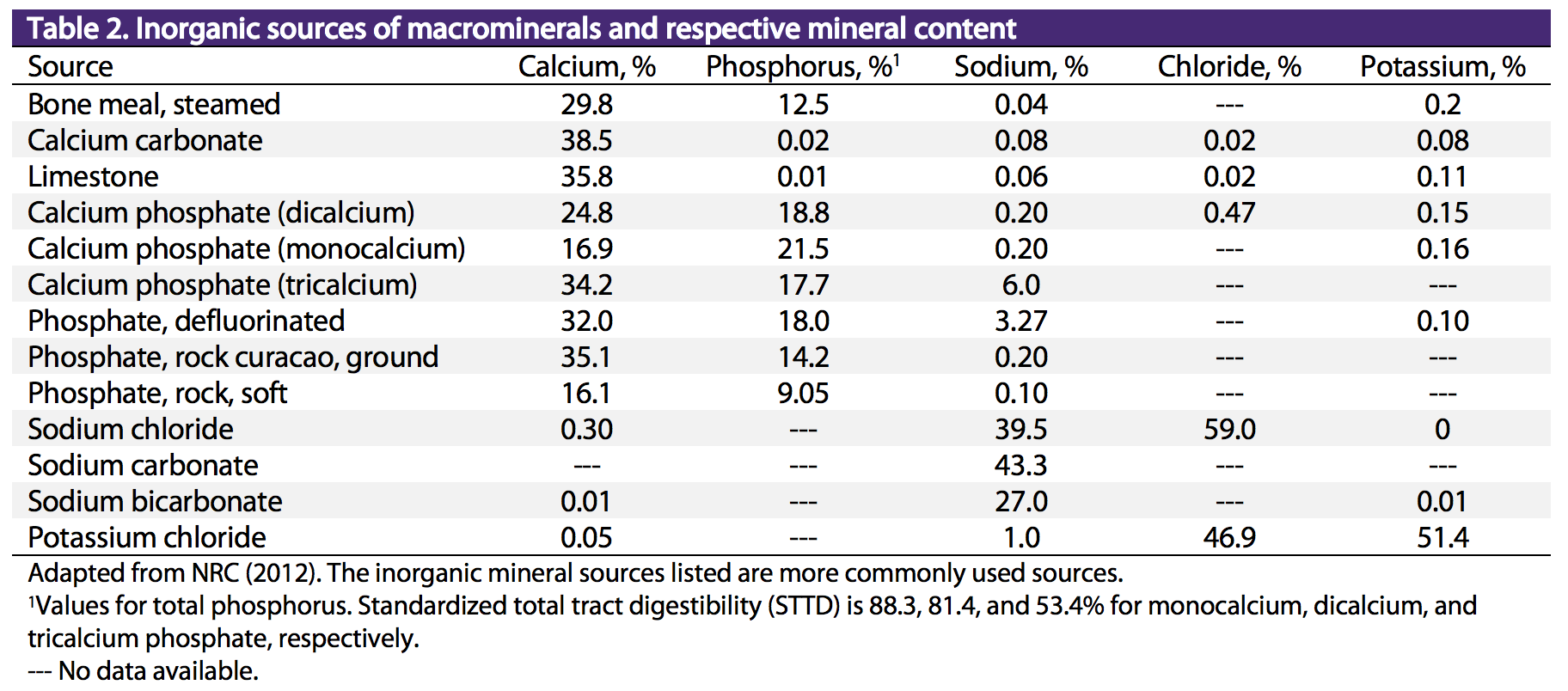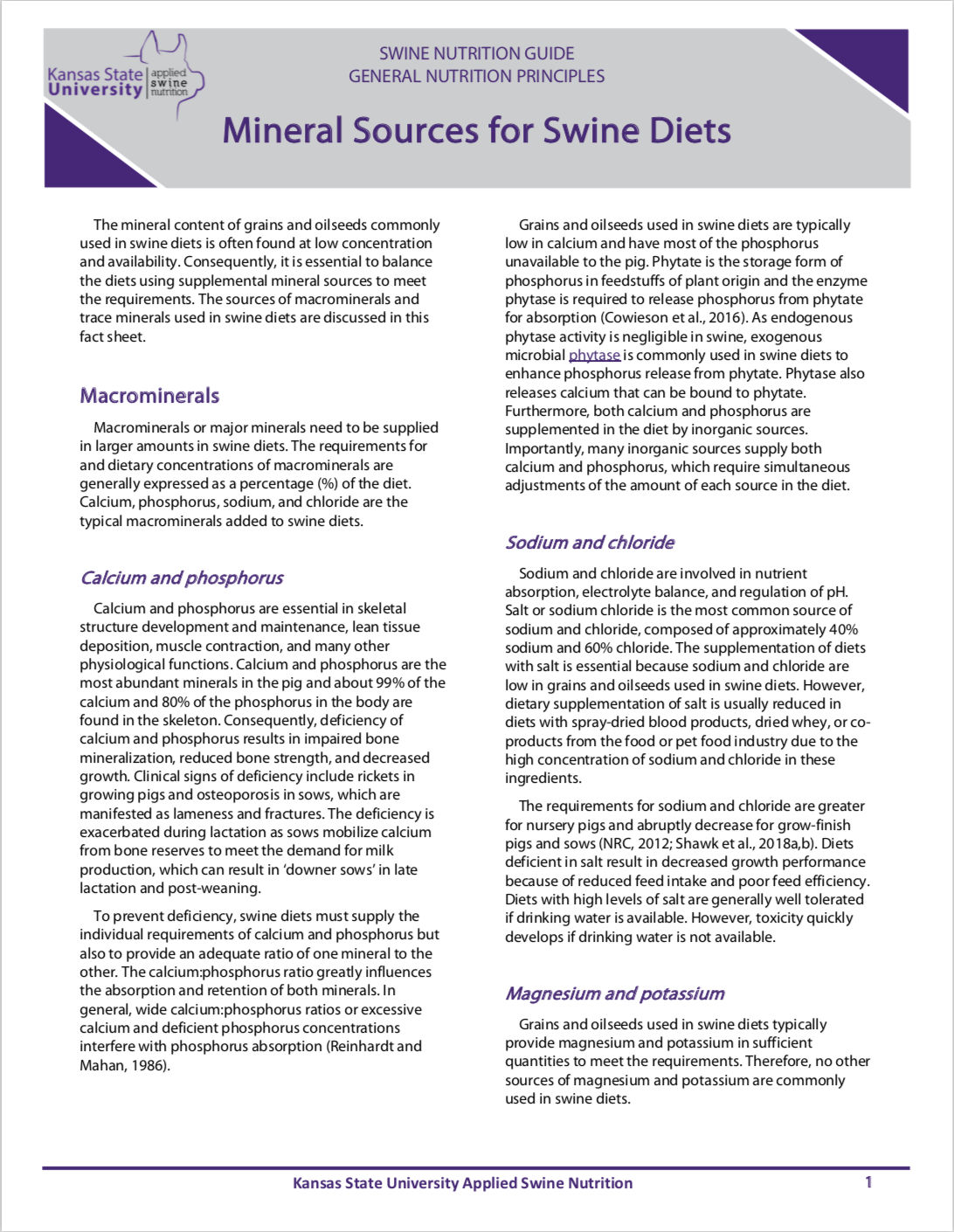Mineral sources
Minerals are available in inorganic or organic forms to add in swine diets. Inorganic minerals are provided as inorganic salts like sulfates, carbonates, chlorides, and oxides. Organic minerals are provided as a complex with an organic agent like amino acids, proteins, and carbohydrates, and are therefore also called complexed or chelated minerals.
Inorganic minerals release free ions that are reactive and likely to bind to other dietary components. This characteristic can affect the stability of vitamins and minerals in the premix, as well as interfere in the absorption of minerals by the pig during digestion. Organic minerals are less likely to bind to other dietary components because the minerals are already in a complex with organic agents. The organic forms are supposed to minimize the interactions and enhance the absorption and bioavailability of minerals (Liu et al., 2014). However, greater bioavailability of organic minerals does not always result in improvements in growth (Creech et al., 2004; Ma et al., 2012) or reproductive performance (Peters and Mahan, 2008; Peters et al., 2010; Ma et al., 2014). Typically, the use of organic mineral sources is more prevalent in diets for sows and nursery pigs (Flohr et al., 2016).
Decisions on which source of mineral to use should be based primarily on price per unit of bioavailable element, with organic minerals usually being more bioavailable but inorganic minerals are typically more economical. A list of the chemical forms in which inorganic macrominerals and trace minerals are available is shown in Table 1 and Table 2 (NRC, 2012).


